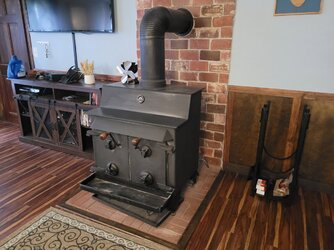I bought a home 7 years ago with a wood stove that may or may not be original to the house (1980 build). Id like to hunt down a manual and find out about flue damper recommendations. This forum was suggested to me from guys o another forum. Can anyone identify this thing? There are no numbers, data tags or nameplates anywhere i can see?



